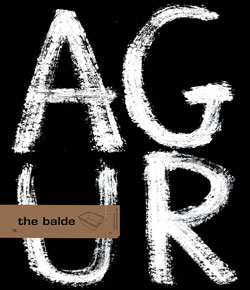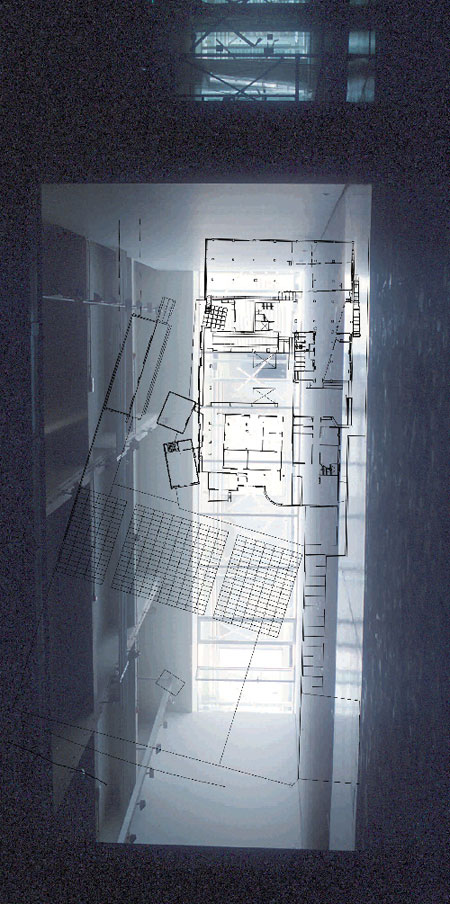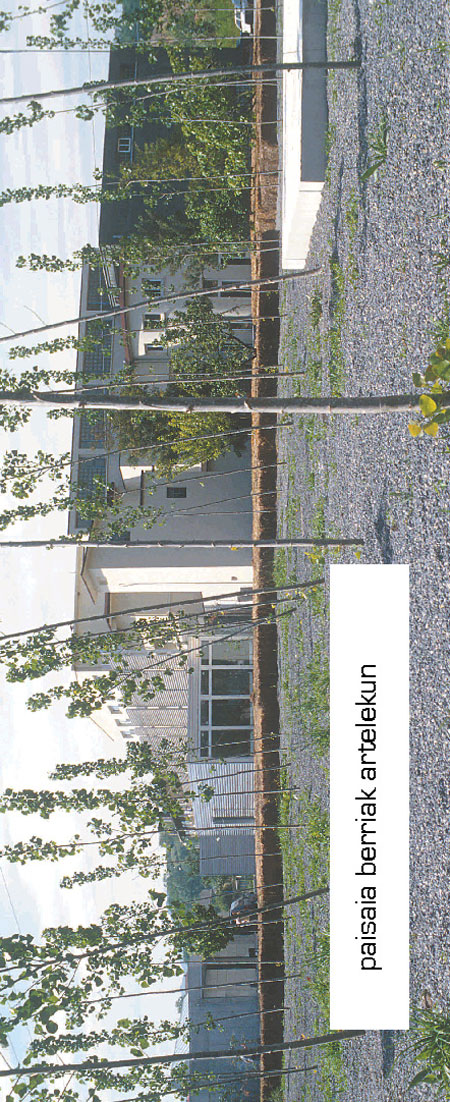new scenery at arteleku ibon salaberria
I txo!? Asier Mendizabal, Alex Mitxelena, Xabier Salaberria and Ibon Salaberria took part in the following conversation recorded on the 13th of may in an old part of Arteleku. "The new idea behind Arteleku, I think it’s been already mentioned, is one of a “node”, a crossroads on a grid".
ibon: you can walk through and around the new building and the gardens now. Arteleku has become an open building.
asier: well, that change goes hand in hand with the “Arteleku” project, it fits in with this new vocation of “democratising”. This new “transparency” could have clear consequences. Centralisation is just one example of what I’m on about here. If people used to move around on the outskirts, that movement could now become centralised. You can then demand a definite return in order for it to be politically viable. Results will be demanded.
ibon: new architecture often has no definite programme to it, no-one knows what the centre of a new square will be used for. So, the key to intervention frequently lies in representation and the resulting new policies created by this.
asier: when architecture is used to come up with an answer to problems of personality, it creates expectative changes, and certain risks as well...
alex: you could think that by sacrificing the old functions of Arteleku different types of inertia might spring up here and there.
asier: all the same, the new idea behind Arteleku, I think it’s been already mentioned, is one of a “node”, a crossroads on a grid.
ibon: there’s also a smaller scale in there, the one shown by the smaller pieces, the new system formed by the sizes of the different rooms.
alex: they seem to be directly related to the domestic scales the old Arteleku had, the answer that the rest of the spaces give to other sizes.
ibon: there are big, transparent spaces, but there are also smaller ones to work in. You can see the way the smaller spaces bounce off the big scale that Arteleku needs.
alex: a single use is proposed for the garden. It’s in accord with image and representation but as it’s to last for 4 or 5 years, it’s different.
ibon: if you were to talk about straw bales...
alex: because it’s ephemeral, lots of things change. We needed something improvised in comparison with the other gardens. Straw bales are dead things that new grass will grow from. The poplars are not an ornamental plantation; it’s a totally sensible element due to its size.
alex: nature will somehow undo the grid order formed by the poplars. The grass that appears on the bales of straw and amongst the poplars will be responsible for designing the garden one way or another.
xabier: the new garden will try to find some kind of solution to certain needs...
asier: the garden is the only place with no need to stipulate a definite use. It will maintain its own autonomy. Once it makes sense, once it creates sense.
xabier: the piece I did there is the proposal based on “intervention”. This gives it a certain sense, although I finally decided to move a bit away from the functional idea of making a piece of furniture for a specific space.
alex: we have to take into account the fact that the garden will one day disappear and Arteleku will carry on with the purpose it was designed for.
asier: what I see as being over the top is how this new outer surface is used.
xabier: it doesn’t balance out.
ibon: architecture also uses the mechanisms created by new occurrences, let the new pieces that have been added take on the sense they want, let them form a new picture in the way Arteleku works.
asier: but don’t you think that the new iconic personality given by the new surface is a bit too much...
ibon: the new surface is not an icon... it’s a cover, a structure stuck onto the old one, a support; I don’t think that it implies an image in itself. I think it shows a surface on which you can stick, hang or add any new meaning that the surface wants.
ibon: I mean, I don’t think any element at all forms an icon, because all of them together create a system.
asier: but this creates an image that the building didn’t have before. What I mean is, the problem is solved as far as aspect goes but it remains unsolved structurally.
ibon: that’s because Aretleku is not an imposed intervention, it respects the older set up and the new pieces are just added to adapt the building to its new use...
ibon: it stopped recording when you stopped talking...
alex: What, has it recorded everything?
ibon: you can walk through and around the new building and the gardens now. Arteleku has become an open building.
asier: well, that change goes hand in hand with the “Arteleku” project, it fits in with this new vocation of “democratising”. This new “transparency” could have clear consequences. Centralisation is just one example of what I’m on about here. If people used to move around on the outskirts, that movement could now become centralised. You can then demand a definite return in order for it to be politically viable. Results will be demanded.
ibon: new architecture often has no definite programme to it, no-one knows what the centre of a new square will be used for. So, the key to intervention frequently lies in representation and the resulting new policies created by this.
asier: when architecture is used to come up with an answer to problems of personality, it creates expectative changes, and certain risks as well...
alex: you could think that by sacrificing the old functions of Arteleku different types of inertia might spring up here and there.
asier: all the same, the new idea behind Arteleku, I think it’s been already mentioned, is one of a “node”, a crossroads on a grid.
ibon: there’s also a smaller scale in there, the one shown by the smaller pieces, the new system formed by the sizes of the different rooms.
alex: they seem to be directly related to the domestic scales the old Arteleku had, the answer that the rest of the spaces give to other sizes.
ibon: there are big, transparent spaces, but there are also smaller ones to work in. You can see the way the smaller spaces bounce off the big scale that Arteleku needs.
alex: a single use is proposed for the garden. It’s in accord with image and representation but as it’s to last for 4 or 5 years, it’s different.
ibon: if you were to talk about straw bales...
alex: because it’s ephemeral, lots of things change. We needed something improvised in comparison with the other gardens. Straw bales are dead things that new grass will grow from. The poplars are not an ornamental plantation; it’s a totally sensible element due to its size.
alex: nature will somehow undo the grid order formed by the poplars. The grass that appears on the bales of straw and amongst the poplars will be responsible for designing the garden one way or another.
xabier: the new garden will try to find some kind of solution to certain needs...
asier: the garden is the only place with no need to stipulate a definite use. It will maintain its own autonomy. Once it makes sense, once it creates sense.
xabier: the piece I did there is the proposal based on “intervention”. This gives it a certain sense, although I finally decided to move a bit away from the functional idea of making a piece of furniture for a specific space.
alex: we have to take into account the fact that the garden will one day disappear and Arteleku will carry on with the purpose it was designed for.
asier: what I see as being over the top is how this new outer surface is used.
xabier: it doesn’t balance out.
ibon: architecture also uses the mechanisms created by new occurrences, let the new pieces that have been added take on the sense they want, let them form a new picture in the way Arteleku works.
asier: but don’t you think that the new iconic personality given by the new surface is a bit too much...
ibon: the new surface is not an icon... it’s a cover, a structure stuck onto the old one, a support; I don’t think that it implies an image in itself. I think it shows a surface on which you can stick, hang or add any new meaning that the surface wants.
ibon: I mean, I don’t think any element at all forms an icon, because all of them together create a system.
asier: but this creates an image that the building didn’t have before. What I mean is, the problem is solved as far as aspect goes but it remains unsolved structurally.
ibon: that’s because Aretleku is not an imposed intervention, it respects the older set up and the new pieces are just added to adapt the building to its new use...
ibon: it stopped recording when you stopped talking...
alex: What, has it recorded everything?




